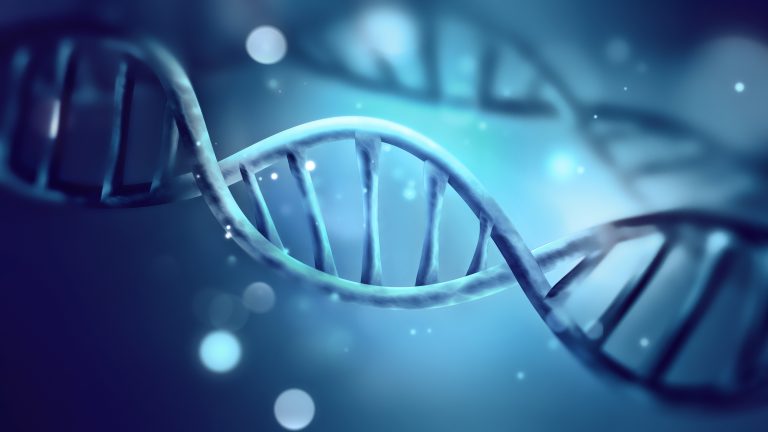Did you know that the top 10 highest grossing drugs in the United States only help between 4-25% of patients who take them? In addition, some drugs may even be harmful to certain minorities because of bias towards non-Hispanic white participants in traditional clinical trials. These statistics should be worrisome to physicians, patients, and payers. There is no wonder why pharmaceutical companies are increasingly moving away from such “imprecision medicine” towards personalized medicine.
Oncology is no different; it is rapidly shifting from a one-size-fits-all approach into personalized medicine. However, even with this rapid progress, many oncologists still prescribe treatment based on broad patient subgroups. As a result, substantial proportions of patients receive sub-optimal treatment.
Currently, the anti-cancer treatment prescribed usually depends on the type of cancer, size, and stage, along with patient preferences. With personalized medicine, also known as precision medicine, information about genetic changes in the tumor is used to determine the best management strategy for each patient. Although there is still a lot to learn, the hope is that personalized medicine will result in patients with cancer achieving both better treatment outcomes and fewer side effects.
In this article, I discuss some of the many challenges surrounding the use of personalized medicine in oncology, along with the potential means to overcome them.
Current Status of Precision Medicine and Targeted Treatment in Oncology
To understand the barriers to the widespread use of precision medicine, we first have to discuss its current role in cancer prevention, screening, and treatment.
In oncology, personalized medicine can be used to predict the likelihood of developing cancer and select high-risk individuals who may require early screening. Additionally, it is useful for treatment decisions throughout the patient’s cancer journey. In terms of cancer treatment and management, precision medicine may include testing of the tumor to determine whether a particular treatment will be effective and tolerated.
Targeted Therapy
For some cancers, one or more targeted therapies are already available. For example, patients with melanoma or breast, colorectal, and lung cancers routinely undergo genetic testing at the time of diagnosis. If the tumor has mutations in known oncogenes such as EGFR, BRAF, or HER2 (for lung cancer, melanoma, and breast cancer, respectively), targeted treatment can be initiated.
However, the available drugs only target a fraction of all mutated genes, and personalized medicine has a long way to go in this respect. As a first step to addressing this challenge, online tools such as the one developed by MD Anderson Cancer Center can help. This tool allows both doctors and patients to search for any given gene mutation and see if there is an approved drug or clinical trial targeting it.
Cancer Prevention
Personalized medicine can also help improve the understanding of how to best prevent cancer. As the link between certain genetic changes and cancer development is clarified, we can predict who are most likely to develop cancer over their lifetime. For example, if testing reveals a particular genetic change, regular imaging studies or cancer screening from an earlier age can be conducted. Alternatively, high-risk patients can be advised to make lifestyle changes to lower their risk of cancer. In some cases, such as in patients with BRCA1- or BRCA2-positivity, prophylactic surgery can be planned.
Current Tools & Assays
Personalized medicine uses several tools to assess the appropriate management strategy for each patient. The effectiveness of these assays is continuously improving. In fact, advances in these technologies are the main reason for the rapid expansion of precision medicine seen today. Among others, the current tools include:
Tumor DNA Sequencing and Standardized Biomarker Assays
 Tumor DNA sequencing is most commonly performed for patients with cancer types that may be susceptible to targeted therapy. In some cases, it may also be used for patients with advanced cancers not responding to standard treatment or in patients participating in clinical trials. Targeted DNA sequencing assays (“multigene panels”) analyzing specific driver mutations are the most frequently used sequencing test for patient care. Other, “broad” DNA sequencing tests such as whole-genome sequencing and whole-exome sequencing are also available. Owing to a lack of studies comparing these two tests, it remains unclear which one is more beneficial to the patients.
Tumor DNA sequencing is most commonly performed for patients with cancer types that may be susceptible to targeted therapy. In some cases, it may also be used for patients with advanced cancers not responding to standard treatment or in patients participating in clinical trials. Targeted DNA sequencing assays (“multigene panels”) analyzing specific driver mutations are the most frequently used sequencing test for patient care. Other, “broad” DNA sequencing tests such as whole-genome sequencing and whole-exome sequencing are also available. Owing to a lack of studies comparing these two tests, it remains unclear which one is more beneficial to the patients.
Standardized biomarker assays, including quantitative mRNA expression tests, are also available for certain cancers. Predictive and prognostic biomarkers are helpful for selecting the appropriate targeted therapy and for preventing toxicity of systemic therapies. In addition to mRNA, clinically used biomarkers include somatic germline mutations, DNA methylation changes, microRNA, and circulating tumor cells.
Radiomics
“Radiomics” refers to high-throughput mining of quantitative image features from standard medical imaging studies such as CT, MRI, and PET using sophisticated image analysis tools. In turn, the extracted data can improve the diagnostic, prognostic, and predictive accuracy. This technology is becoming increasingly important for modern medicine, and oncology in particular.
By using radiomics, scientists can objectively quantify different tumor features such as size, intensity, texture, and shape. Subsequently, these data can, together with genetic and clinical information, help predict active biological pathways and clinical outcomes. They can also predict the most effective treatment regimen.
 Radiomics has several advantages over other commonly used biomarkers such as those obtained by invasive tissue biopsies. These samples are often only collected at the beginning of care and may not accurately reflect the tumor heterogeneity. In contrast, imaging techniques are noninvasive and can provide information about the entire tumor throughout the course of treatment. Additionally, as most cancer patients routinely undergo diagnostic imaging, radiomics is very cost-effective. Although still in its early days, this is one exciting technology to keep an eye on!
Radiomics has several advantages over other commonly used biomarkers such as those obtained by invasive tissue biopsies. These samples are often only collected at the beginning of care and may not accurately reflect the tumor heterogeneity. In contrast, imaging techniques are noninvasive and can provide information about the entire tumor throughout the course of treatment. Additionally, as most cancer patients routinely undergo diagnostic imaging, radiomics is very cost-effective. Although still in its early days, this is one exciting technology to keep an eye on!
Companion Diagnostics
Companion diagnostics are medical devices or tests that provide critical information for the safe and effective use of the corresponding treatment. Often, these tests are in vitro assays or imaging studies but they can also be nucleic acid-based. They help oncologists determine whether the benefits of a particular treatment will outweigh any potential side effects in that individual patient. Further, companion diagnostics can identify the patients most likely to benefit from a treatment and help monitor the treatment response over time. For example, one notable companion diagnostic device is the ALK break-apart FISH assay, which was concurrently developed with the ALK inhibitor crizotinib for the treatment of NSCLC. Despite being a relatively new invention, companion diagnostics have been shown to improve the objective response rates for several advanced or metastatic cancers.
Drug Sensitivity Assays
Another important piece of the puzzle is drug sensitivity assays. Unlike targeted therapies, for which there are very specific biomarkers to assess, the outcomes of most other anti-cancer treatment options cannot be predicted prior to the treatment. Therefore, evidence-based drug sensitivity tests are being developed and evaluated to address this issue. In general, the first step of drug sensitivity analysis is biopsy or liquid biopsy. This is usually followed by tumor amplification by patient-derived xenograft models, two-dimensional monolayer cell culture, or three-dimensional organoid culture. Alternatively, microfluidic devices can be applied to reduce the sample requirement for high-throughput drug screening. Finally, there are novel devices that are implanted into the patient’s tumor where they release minute amounts of different drugs, drug combinations, and/or different concentrations of a drug. After a pre-specified time, the device is removed and the surrounding tumor sample is studied.
Challenges to Personalized Medicine (and How to Overcome Them)
Despite the recent technological advances and promise of precision medicine, we still have some way to go before anti-cancer treatment will be truly personalized. Some of the remaining challenges include:
Privacy Concerns and Regulatory Issues
Whenever genetic or personal information is involved, especially in clinical trials, ensuring the safety and privacy of those data is always critical. Although there are regulations and laws aiming to protect these data, this can slow down the already-slow research progress.
Lack of Patient and Physician Awareness
 Many patients are unaware about the possibility of personalized medicine for their cancer, as well as the potential of enrolling in clinical trials. To overcome this, education to both clinicians and patients is required, including on privacy protection and the need for additional research.
Many patients are unaware about the possibility of personalized medicine for their cancer, as well as the potential of enrolling in clinical trials. To overcome this, education to both clinicians and patients is required, including on privacy protection and the need for additional research.
Moreover, the healthcare system tends to focus on treatment rather than prevention, and the use of personalized medicine for cancer prevention therefore needs to be emphasized.
Imprecision and Uncertainties of Current Genetic Tests
Imagine being a patient undergoing a genetic test that reveals a mutation suggesting a potentially higher risk of a certain cancer. Although this is valuable information, it does not always translate to the development of cancer, and can cause a lot of anxiety for both the patient and their family. In addition, inadequate tumor specimens for analysis and tumor heterogeneity may further limit the utility of genetic testing. It is important to remember that cancer is almost always multifactorial, and more precise assays are hence needed to make precision medicine just that – more precise.
High Costs and Lack of Evidence Regarding Cost-effectiveness
Treatment using precision medicine is still expensive, owing largely to the long process of researching, developing, and bringing drugs to the market. Depending on the insurance provider and type of cancer, genetic testing itself may also be costly to patients, as this is not always covered by insurance. If there is no evidence of clinical or economic benefit for a certain cancer, the patients usually have to carry to cost. From a patient perspective, joining a clinical trial can often help cover the costs of testing and therapy. However, these are only available for select patients and cancers. Luckily, the sequencing techniques are continuously improving, hopefully bringing the price down in the near future. Finally, building databases and other infrastructures to collect and share the data are also expensive, indicating a need for more effective approaches.
The Need for Research Cooperation and More Efficient Data Analysis
To make progress in personalized medicine, researchers from different institutions and countries must work together and be able to easily share information. This requires a lot of cooperation and coordination. When studying the genetics of cancer, a huge amount of data (“big data”) are gathered. Usually, these genetic data are collected to answer only one or two research questions as part of a trial. However, the data contain additional information that can be analyzed by other researchers to answer many other questions that were not part of the original study. To enable effective analysis of big data, more efficient ways to store, share, and study these additional data via information platforms or global databases are needed.
The analysis of big data furthermore poses a barrier to the use of radiomics as a predictive tool. Significant statistical problems can arise during the analysis, with overfitting leading to false discoveries. That is, relationships that do not exist are seen. In addition, the reporting guidelines and terminology used for the derived image features are not standardized. This makes it difficult to compare data between studies and institutions. Similarly, the number of features incorporated into radiomic analyses and the evaluation criteria also vary, leading to a phenomenon known as “biomarker drift.” All-in-all, these barriers will need to be addressed before the use of radiomics can become more widespread.
The Need for More, and Better, Clinical Trials
Clinical trials for targeted therapies face important challenges. Among others, these include the need to screen a large number of patients to identify and enroll the population of interest, since most molecular biomarkers have a low prevalence in cancer. Thus, there is a high need for robust screening infrastructure, validated biomarkers, and quality-controlled processes to ensure that the right patients are enrolled in the right trials.
Different, non-traditional clinical trials are also needed to more quickly bring new treatments to patients. These may include basket trials, umbrella trials, and adaptive trials. As most patients are living far from the major research centers, the clinical trials system needs improved infrastructure to become more time- and cost-efficient in terms of being able to find, test, and treat patients across the country, including in rural areas.
Further, in addition to more traditional clinical trials with hundreds or thousands of participants, studies that focus on a single person (“N-of-1 trials”) are expected to play a crucial role in enhancing personalized medicine. These trials will be especially important for patients with rare cancers. By aggregating the results of several N-of-1 trials performed using the same methods, researchers can collect information on how to better treat patient subgroups, or even the population at large. However, formalizing the N-of-1 approach requires several practical problems to be solved first. These include exploiting the diversity of health-monitoring devices, developing new devices, and identifying appropriate cancer biomarkers. It will also require an overall cultural shift among regulatory agencies, pharmaceutical companies, and clinics. Finally, as with most other things, cost is a major barrier.
How Impetus Can Help
Whether you are looking for help designing a non-traditional clinical trial protocol, creating standardized guidelines, or determining the best ways to educate patients and physicians on personalized medicine (or anything else you can think of), Impetus Digital can help!
In more detail, Impetus can assist with establishing an online advisory board platform, leveraging the expertise of key stakeholders to give timely and expert advice. Stakeholders can include researchers, oncologists, patients, administrators, payers, and other experts. The enrolled advisors are engaged through a series of online touchpoints. These can either be in the form of synchronous web meetings or asynchronous assignments delivered as survey questions via InSite Surveyor™, discussion questions via InSite Exchange™, or annotation exercises, among other formats.
 The virtual nature of the advisory boards substantially increases the engagement rates of the advisors and the frequency of interaction. Moreover, the asynchronous nature of the assignments gives the advisors time to pause, reflect, process, and review their colleagues’ comments on their own time before replying. This allows for more thoughtful and granular insights shared through the online forums. For the above reasons, this is an ideal format for exploring the best ways to overcome the remaining barriers to precision medicine in oncology!
The virtual nature of the advisory boards substantially increases the engagement rates of the advisors and the frequency of interaction. Moreover, the asynchronous nature of the assignments gives the advisors time to pause, reflect, process, and review their colleagues’ comments on their own time before replying. This allows for more thoughtful and granular insights shared through the online forums. For the above reasons, this is an ideal format for exploring the best ways to overcome the remaining barriers to precision medicine in oncology!
The Bottom Line
Although we still have a long way to go until anti-cancer treatment truly is personalized, there is no doubt that this is where we are heading. Progress is being made every day!
The use of personalized medicine in oncology will not only improve the screening and treatment processes, but may also solve problems related to drug resistance. Collecting and sharing data with researchers across the globe will be essential and help move precision medicine forward. It is also important to emphasize to patients, funders, and regulatory agencies that these are still the early days of precision medicine. To this end, education, education, education will be key. Strong evidence that personalized cancer therapy as a generalized approach benefits both patients and the healthcare system must also be gathered before it will be broadly accepted and applied. Additionally, the technologies used to screen patients must be further refined to bring down costs and improve efficiency.
References:
Canadian Cancer Society. (2018). Personalized medicine. Retrieved from: http://www.cancer.ca/en/cancer-information/cancer-101/cancer-research/personalized-medicine/
Carlson, B. (2006). Diagnostic Assays a Key To Personalized Medicine. Biotechnol Healthc, 3, 15–18.
Jonas, O., Landry, H.M., Fuller, J.E., et al. (2015). An implantable microdevice to perform high-throughput in vivo drug sensitivity testing in tumors. Sci Transl Med, 7, 284ra57.
Jørgensen, J.T. (2015). Companion diagnostics: the key to personalized medicine. Expert Rev Mol Diagn, 15, 153–156.
Jørgensen, J.T., Hersom, M. (2016). Companion diagnostics—a tool to improve pharmacotherapy. Ann Transl Med, 4, 482.
Kalia, M. (2015). Biomarkers for personalized oncology: recent advances and future challenges. Metabolism, 64, S16-S21.
Lambin, P., Leijenaar, R.T.H., Deist, T.M., et al. (2017). Radiomics: the bridge between medical imaging and personalized medicine. Nature Reviews Clinical Oncology, 14, 749–762
Mendes, E. (2015). Personalized Medicine: Redefining Cancer and Its Treatment. Retrieved from: https://www.cancer.org/latest-news/personalized-medicine-redefining-cancer-and-its-treatment.html
Mendes, E. (2015). Personalized Cancer Care: Where it Stands Today. Retrieved from: https://www.cancer.org/latest-news/personalized-cancer-care-where-it-stands-today.html
Moffitt Cancer Center. (2017). The power of radiomics to improve precision medicine. Retrieved from: https://www.sciencedaily.com/releases/2017/08/170803135210.htm
Morfouace, M., Kaur, D. (2018). Perfecting personalised medicine in cancer research. Deep Dive. Retrieved from: https://deep-dive.pharmaphorum.com/magazine/oncology-2018/perfecting-personalised-medicine-in-cancer-research/
National Cancer Institute. (2017). Precision Medicine in Cancer Treatment. Retrieved from: https://www.cancer.gov/about-cancer/treatment/types/precision-medicine
National Cancer Institute. (2017). Tumor DNA Sequencing in Cancer Treatment. Retrieved from: https://www.cancer.gov/about-cancer/treatment/types/precision-medicine/tumor-dna-sequencing
O’Connor, J.P. (2017). Rethinking the role of clinical imaging. Elife 6, e30563. Cited in: https://healthmanagement.org/c/imaging/news/radiomics-as-a-tool-for-personalised-medicine
Schork, N.J. (2015). Personalized medicine: Time for one-person trials. Nature, 520, 609–611.
Tannock, I.F., Hickman, J.A. (2016). Limits to Personalized Cancer Medicine. New Engl J Med, 375, 13.
U.S. Food and Drug Administration. (2018). Companion Diagnostics. Retrieved from: https://www.fda.gov/medicaldevices/productsandmedicalprocedures/invitrodiagnostics/ucm407297.htm
Wong, J.K.U., Wong, A.H.H. (2017). Drug Sensitivity Tests for Personalized Cancer Therapy. SciFed Drug Delivery Research Journal. Retrieved from: http://scifedpublishers.com/fulltext/drug-sensitivity-tests-for-personalized-cancer-therapy/21801?f=drug-sensitivity-tests-for-personalized-cancer-therapy&id=21801

